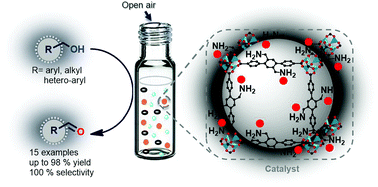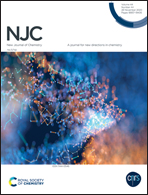Amine-functionalized metal–organic framework-based Pd nanoparticles: highly efficient multifunctional catalysts for base-free aerobic oxidation of different alcohols†
Abstract
A palladium (Pd) nanoparticle containing a metal organic framework (MOF) is described as a highly efficient multifunctional catalyst for the aerobic oxidation of different aliphatic, aromatic and heteroaromatic alcohols in toluene. The catalytic efficiency was demonstrated by the high conversion of various reactants with 100% selectivity under mild reaction conditions, where a wide range of reactants are selectively converted into their corresponding products in excellent yields (up to 98%). The unique texture of the prepared catalyst was well maintained after several recycling cycles of the catalyst. The catalyst could be reused multiple times without further pre-treatment or any extra precautions for further catalytic cycles. Importantly, the recovery, reusability and excellent selectivity of the prepared catalyst for aerobic oxidation are the remarkable advantages of this method. More importantly, this study has demonstrated the great potential of MOF-based palladium nanoparticles as efficient multifunctional catalysts, while the reaction proceeded smoothly without any external base additives and co-catalysts.



 Please wait while we load your content...
Please wait while we load your content...